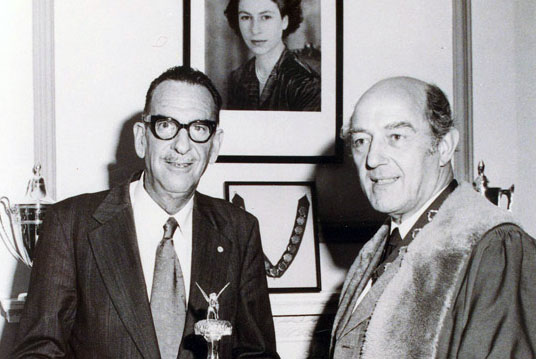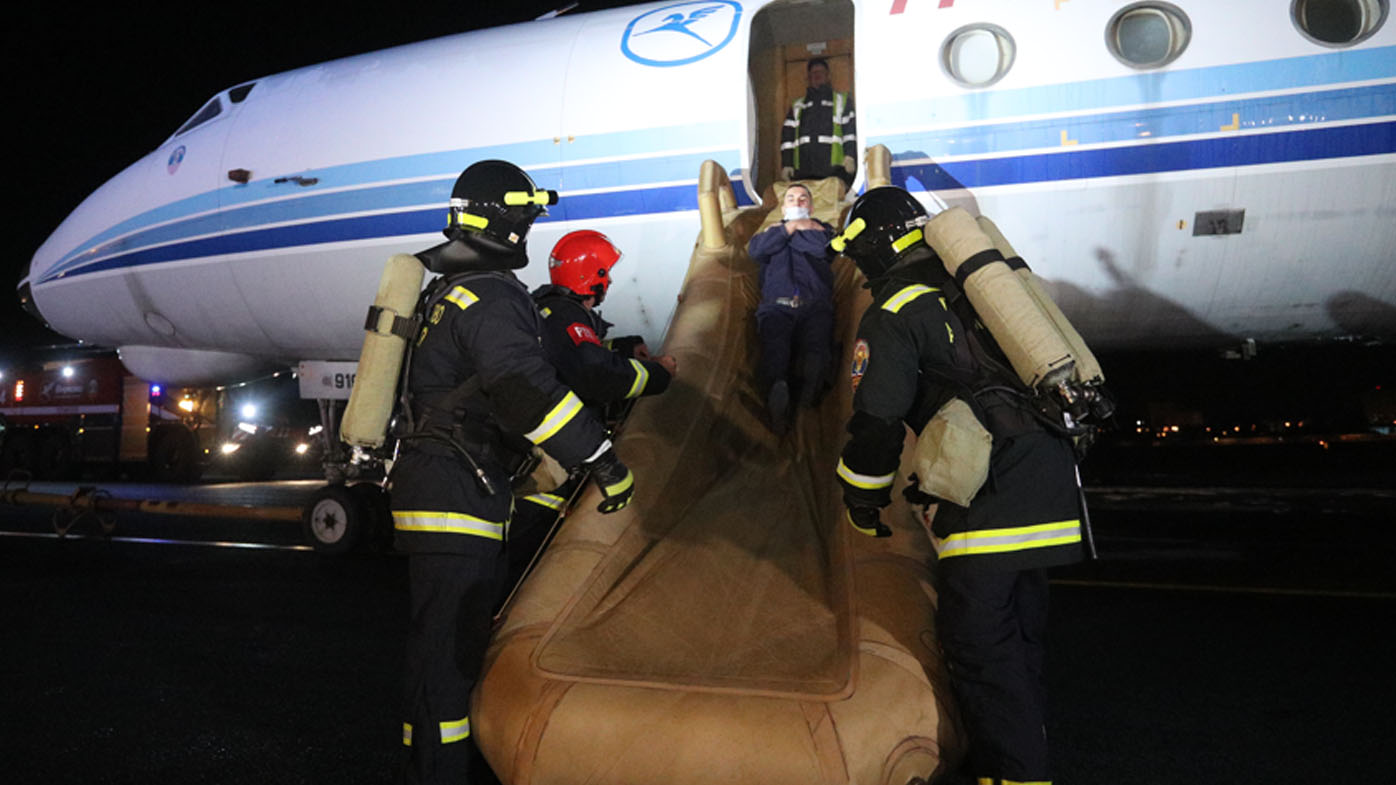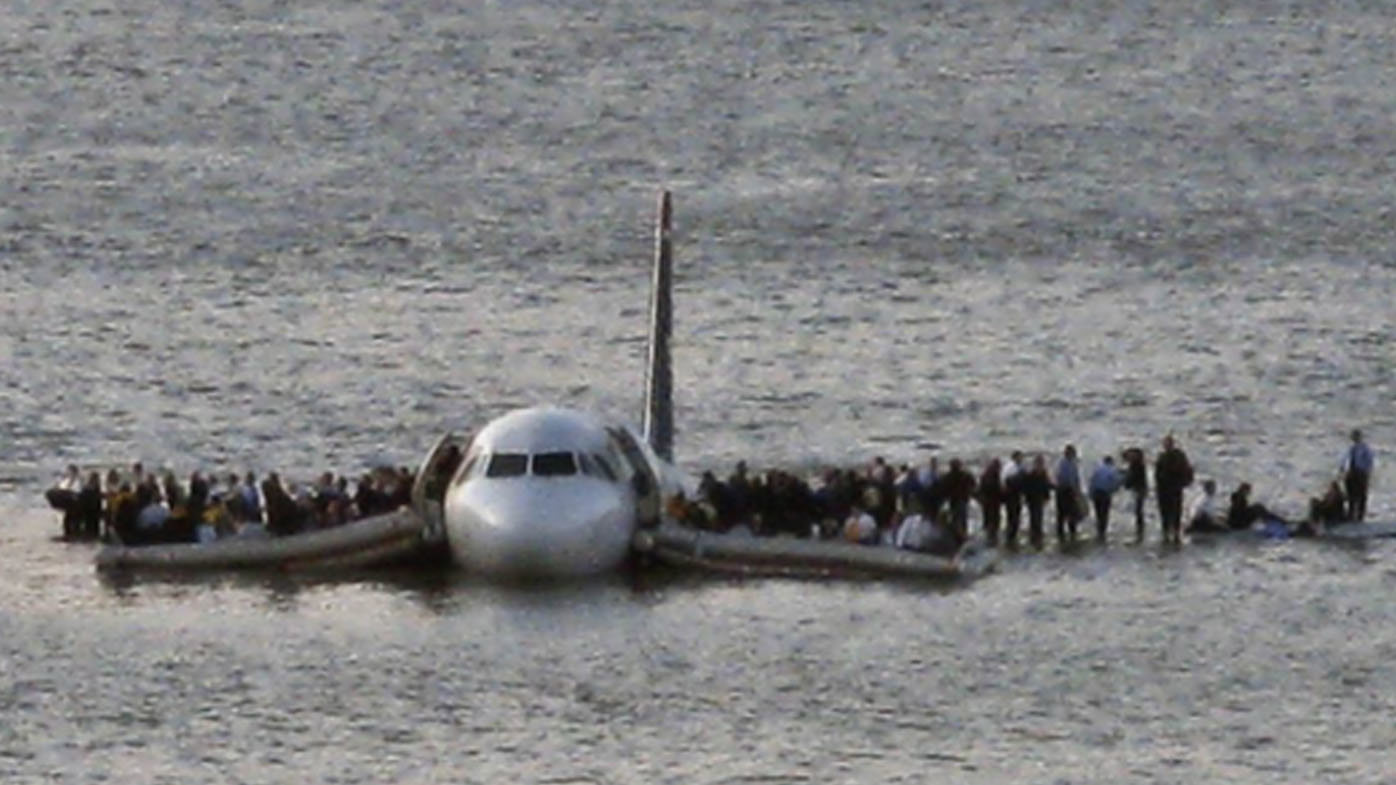The Australian man whose revolutionary invention made air travel safer for millions of people is being hailed an unassuming genius on the 100th anniversary of his birth.
For plane passengers across the globe today, the inflatable escape slide - highlighted on in-flight safety cards and by cabin crew briefings before take-off - is a familiar part of flying.
But much less well known is John Grant, the Australian inventor of this life-saving safety device, who was born on September 18, 1921.
READ MORE: The 'Golden Age of Air Travel': What flying was like during the 1950s and 1960s

"He was never seeking any attention from his invention. He was a quite, hard working person who just got on with his job," Grant's niece Jane Winiarczyk, of Tasmania, told nine.com.au.
"While many people know about the inflatable escape slide, I think few know of my uncle."
Mr Grant developed his escape slide concept during the 1960s while working as a Qantas safety operations safety superintendent, a job he started after service in World War II.
Flying warplanes with the Royal Australian Air Force and British Royal Air Force during the conflict, he realised the danger flight crews faced when aircraft were forced to land on water.
READ MORE: American Airlines pulls some flights to Australia

After the war ended in 1945, the introduction of jet-engine planes advanced air travel.
But some safety features failed to catch up.
During the 1950s and early 1960s, planes had life rafts stored above seated passengers, which could be taken down and launched through the door in the event of a crash on water.
But the process proved slow and cumbersome, made more difficult during an emergency water landing.
In 1965, Mr Grant, who hailed from Sydney, hit on the concept of combining the escape slide and the life raft into one inflatable device.
Rather than using fixed stairs and separate inflatable life rafts, Grant envisaged an inflatable slide that could be launched during an emergency landing on water, enabling people to slide down, stay on the slide, release it from the aircraft, and float away from the plane unharmed.
But he had a lengthy task in convincing aircraft manufacturers, airlines and government officials, Ms Winiarczyk said.
READ MORE: Everything you need to know about Jeff Bezos flying to space

"He had quite a hard time convincing them about the worthiness of his invention. I know it consumed a lot of his time and energy," she said.
After Grant put his idea to US and British aircraft makers, they demanded extensive trials on its performance and ability.
They were held in Sydney and at overseas test sites, including Hawaii and Barbados.
After Grant made careful refinements, the invention was recognised by US and UK air safety regulators.
The launch of the inflatable escape slide in the mid 1960s came just as Boeing introduced the revolutionary 747 Jumbo aircraft. The giant aircraft could carry more than 600 passengers.
Grant's device went on to be fitted to all large aircraft including Airbus and Concorde airliners.
The inflatable escape slide has helped save the lives of hundreds of people after being deployed on water and land.

Perhaps the most famous incident was the 'Miracle on the Hudson' - on January 15, 2009 - when a US Airways plane crash landed into New York's Hudson River.
Its escape slides helped save 155 people aboard the stricken jet.
"Today you wouldn't think of getting on a plane without it," Ms Winiarczyk said.
"This year - 100 years since the inventor's birth - seems a good time to reflect on its Australian inventor and what he achieved."
